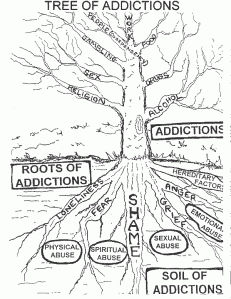 When asked what makes for good patient care in medicine, a typical answer is that it should be “patient-centered.” Sure, “evidence-based medicine” and expert clinical guidelines are helpful, but they only serve as the scientific foundation upon which we base our individualized treatment decisions. What’s more important is how a disorder manifests in the patient and the treatments he or she is most likely to respond to (based on genetics, family history, biomarkers, etc). In psychiatry, there’s the additional need to target treatment to the patient’s unique situation and context—always founded upon our scientific understanding of mental illness.
When asked what makes for good patient care in medicine, a typical answer is that it should be “patient-centered.” Sure, “evidence-based medicine” and expert clinical guidelines are helpful, but they only serve as the scientific foundation upon which we base our individualized treatment decisions. What’s more important is how a disorder manifests in the patient and the treatments he or she is most likely to respond to (based on genetics, family history, biomarkers, etc). In psychiatry, there’s the additional need to target treatment to the patient’s unique situation and context—always founded upon our scientific understanding of mental illness.
It’s almost a cliché to say that “no two people with depression [or bipolar or schizophrenia or whatever] are the same.” But when the “same” disorder manifests differently in different people, isn’t it also possible that the disorders themselves are different? Not only does such a question have implications for how we treat each individual, it also impacts how we interpret the “evidence,” how we use treatment guidelines, and what our diagnoses mean in the first place.
For starters, every patient wants something different. What he or she gets is usually what the clinician wants, which, in turn, is determined by the diagnosis and established treatment guidelines: lifelong medication treatment, referral for therapy, forced inpatient hospitalization, etc. Obviously, our ultimate goal is to eliminate suffering by relieving one’s symptoms, but shouldn’t the route we take to get there reflect the patient’s desires? When a patient gets what he or she wants, shouldn’t this count as good patient care, regardless of what the guidelines say?
 For instance, some patients just want a quick fix (e.g., a pill, ideally without frequent office visits), because they have only a limited amount of money (or time) they’re willing to use for treatment. Some patients need to complete “treatment” to satisfy a judge, an employer, or a family member. Some patients visit the office simply to get a disability form filled out or satisfy some other social-service need. Some simply want a place to vent, or to hear from a trusted professional that they’re “okay.” Still others seek intensive, long-term therapy even when it’s not medically justified. Patients request all sorts of things, which often differ from what the guidelines say they need.
For instance, some patients just want a quick fix (e.g., a pill, ideally without frequent office visits), because they have only a limited amount of money (or time) they’re willing to use for treatment. Some patients need to complete “treatment” to satisfy a judge, an employer, or a family member. Some patients visit the office simply to get a disability form filled out or satisfy some other social-service need. Some simply want a place to vent, or to hear from a trusted professional that they’re “okay.” Still others seek intensive, long-term therapy even when it’s not medically justified. Patients request all sorts of things, which often differ from what the guidelines say they need.
Sometimes these requests are entirely reasonable, cost-effective, and practical. But we psychiatrists often feel a need to practice evidence- (i.e., science-) based medicine; thus, we take treatment guidelines (and diagnoses) and try to make them apply to our patients, even when we know they want—or need—something else entirely, or won’t be able to follow through on our recommendations. We prescribe medications even though we know the patient won’t be able to obtain the necessary lab monitoring; or we refer a patient for intensive therapy even though we know their insurance will only cover a handful of visits; we admit a suicidal patient to a locked inpatient ward even though we know the unpredictability of that environment may cause further distress; or we advise a child with ADHD and his family to undergo long-term behavioral therapy in conjunction with stimulants, when we know this resource may be unavailable.
 Guidelines and diagnoses are written by committee, and, as such, rarely apply to the specifics of any individual patient. Thus, a good clinician uses a clinical guideline simply as a tool—a reference point—to provide a foundation for an individual’s care, just as a master chef knows a basic recipe but alters it according to the tastes he wishes to bring out or which ingredients are in season. A good clinician works outside the available guidelines for many practical reasons, not the least of which is the patient’s own belief system—what he or she thinks is wrong and how to fix it. The same could be said for diagnoses themselves. In truth, what’s written in the DSM is a model—a “case study,” if you will—by which real-world patients are observed and compared. No patient ever fits a single diagnosis to a “T.”
Guidelines and diagnoses are written by committee, and, as such, rarely apply to the specifics of any individual patient. Thus, a good clinician uses a clinical guideline simply as a tool—a reference point—to provide a foundation for an individual’s care, just as a master chef knows a basic recipe but alters it according to the tastes he wishes to bring out or which ingredients are in season. A good clinician works outside the available guidelines for many practical reasons, not the least of which is the patient’s own belief system—what he or she thinks is wrong and how to fix it. The same could be said for diagnoses themselves. In truth, what’s written in the DSM is a model—a “case study,” if you will—by which real-world patients are observed and compared. No patient ever fits a single diagnosis to a “T.”
Unfortunately, under the pressures of limited time, scarce resources, and the threat of legal action for a poor outcome, clinicians are more inclined to see patients for what they are than for who they are, and therefore adhere to guidelines even more closely than they’d like. This corrupts treatment in many ways. Diagnoses are given out which don’t fit (e.g., “parity” diagnoses must be given in order to maintain reimbursement). Treatment recommendations are made which are far too costly or complex for some patients to follow. Services like disability benefits are maintained far beyond the period they’re needed (because diagnoses “stick”). And tremendous resources are devoted to the ongoing treatment of patients who simply want (and would benefit from) only sporadic check-ins, or who, conversely, can afford ongoing care themselves.
The entire situation calls into question the value of treatment guidelines, as well as the validity of psychiatric diagnoses. Our patients’ unique characteristics, needs, and preferences—i.e., what helps patients to become “well”—vary far more widely than the symptoms upon which official treatment guidelines were developed. Similarly, what motivates a person to seek treatment differs so widely from person to person, implying vastly different etiologies.
To provide optimal care to a patient, care must indeed be “patient-centered.” But truly patient-centered care must not only sidestep the DSM and established treatment guidelines, but also, frequently, ignore diagnoses and guidelines altogether. What does this say about the validity, relevance, and applicability of the diagnoses and guidelines at our disposal? And what does this say about psychiatry as a science?



 Posted by stevebMD
Posted by stevebMD 










